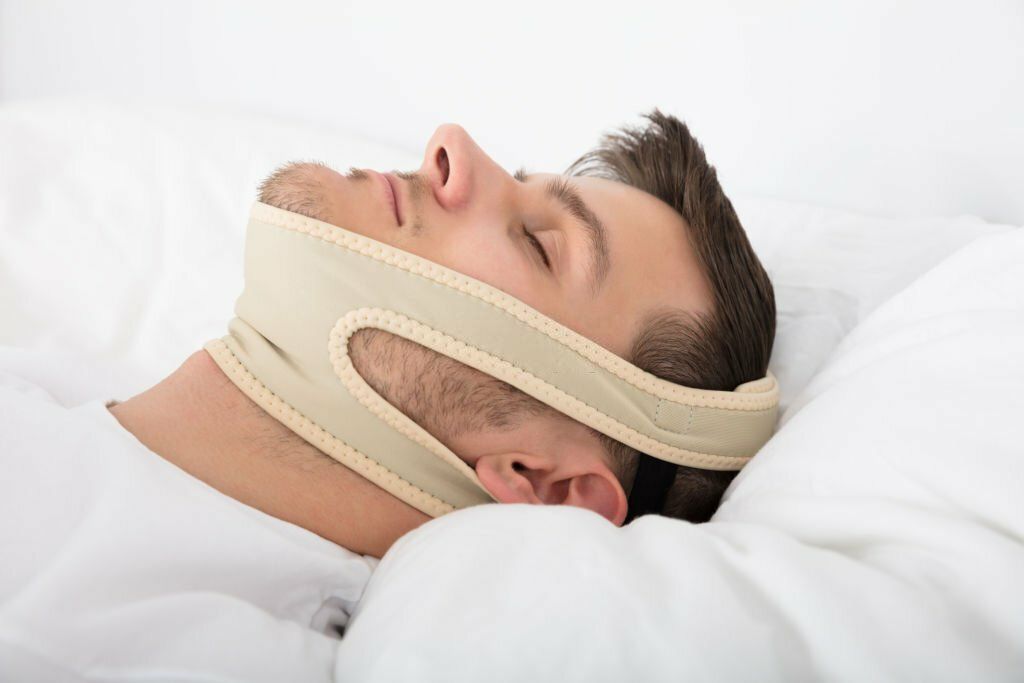This article is reviewed, corrected, and approved by: Dr. Benjamin McLean M.D. | FCPS | FRCP | MPH
Having a better facial appearance is desired for everyone because appearance plays a big role. One such procedure that can enhance the chin and bring balance to the face is genioplasty or chin surgery.
Today, I will discuss with you all about all about genioplasty surgery from genioplasty before and after, why people opt for it, the associated risks, and more.
What is Genioplasty?
Chin augmentation surgery, is a surgical procedure that reshapes the chin to create a more harmonious facial profile, known as Genioplasty. The process can address various chin concerns, including a receding, unstructured, or weak chin. By modifying the structure and position of the chin bone, genioplasty can greatly enhance the aesthetics of the lower face.
Reasons for Getting Genioplasty
Generally, genioplasty helps to make you look better, it’s true. It is also sometimes done to address functional issues, such as difficulty chewing or speaking. Individuals may choose this procedure to add to their weak or recessed chin, resulting in a more balanced facial appearance.
Moreover, by repositioning the chin bone, genioplasty can address certain bite-related issues, such as an overbite or underbite.
Purpose of Genioplasty

- Aesthetic Enhancement: Achieving aesthetic goals by mproving chin appearance and facial balance.
- Facial Symmetry: Correcting facial asymmetry for better balance.
- Bite Alignment: Aligning jaws and teeth for improved dental health.
- Breathing and Sleep Apnea: Addressing breathing and sleep issues like sleep apnea. Sleep apnea might sound harmless but it is life threatening. To learn more, read this article: Revealing The Fact - Can Sleep Apnea Kill You?
- Trauma or Injury: Correcting congenital deformities or injuries of chin and jaw.
- Gender Confirmation: Face feminization or masculinization occurs during gender confirmation.
- Revision: Correcting or revising prior chin surgeries.
Types of Genioplasty
There are different types of genioplasty procedures aimed at achieving various outcomes.
- Sliding Genioplasty: It involves repositioning the chin by altering the chin bone's position to improve facial aesthetics or function.
- Vertical Genioplasty: Adjusts chin height to address facial asymmetry or imbalances.
- Horizontal Genioplasty: Modifies horizontal chin position to correct protrusion or recession.
- Genioplasty with Implants: Combines genioplasty with chin implants for desired shape and projection. Learn more about chin implants from this article: Chin Implant Before and After : What to Consider?
- Facial Gender Surgery: Part of feminization or masculinization to align with gender identity.
- Orthognathic Surgery: May complement jaw realignment for bite correction and facial harmony.
- Trauma Reconstruction: Used in chin fracture or injury repairs.
How Genioplasty Performed?
Here's a concise overview of how genioplasty is performed, covering sliding genioplasty and implant augmentation:
Sliding Genioplasty
- Preoperative planning, including X-rays and CT scans.
- General anesthesia is administered for comfort.
- Small incision is created inside the oral cavity or underneath the chin.
- The chin bone repositioned carefully.
- Bone stabilization with plates and screws.
- Sliding genioplasty recovery time takes slightly more than implant augmentation
- Closure of incisions and recovery over several weeks.
Implant Augmentation
- Consultation to choose implant size and shape.
- Apply general anesthesia or local anesthesia.
- Under the chin or inside the mouth, incisions are made.
- Implant placed in a pocket created either on the bone or between muscles.
- Closure of incisions and recovery with some swelling and discomfort.
Risks and Complications of Genioplasty
Genioplasty procedure involves some risks, just like any surgery. Anesthesia can cause infection, bleeding, nerve damage, or adverse reactions.
It is important to schedule a consultation discuss these risks with your surgeon beforehand and ensure that you are a suitable candidate for the procedure. Choosing a skilled surgeon and adhering to post-operative instructions can reduce the chances of complications arising from surgery.
Genioplasty Before and After: What to Expect?
Understanding what to expect during your recovery journey can help you prepare for the remarkable results ahead:
Before Genioplasty Surgery
- Pre-Surgery Assessment: Before the procedure, a comprehensive assessment will be conducted. This includes an evaluation of your facial structure, shape of chin, bite, and aesthetic goals.
- Customized Surgical Plan: Your surgeon will lay up a surgery strategy specifically designed for your anatomy and intended result.
- Pre-Operative Preparations: You'll receive specific instructions regarding fasting, medication, and post-operative care to ensure a smooth surgical experience.
Immediate Changes After Genioplasty
- Subtle Swelling and Bruising: In the first few days after genioplasty, minor swelling and bruising are quite typical. This is a normal reaction to surgery, and it may be controlled with appropriate post-operative care.
- Sensitivity and Discomfort: You may experience some sensitivity or mild discomfort around the chin area. This can be managed by taking painkillers as prescribed and according to surgical recovery guidelines.
- Initial Contour Changes: One of the most exciting aspects of genioplasty is the immediate enhancement of your chin's projection and overall contour. This initial transformation sets the stage for the long-term results to come.
Long-Term Transformations
- Full Recovery Timeline: While immediate changes are noticeable, it's important to understand that full recovery and the final result may take a few months. During this time, you'll witness a gradual reduction in swelling, revealing the true, stunning outcome of your prominent chin.
- Stabilization of Tissues: As your body heals, the all the soft tissue around the chin area will stabilize. This means that the final result becomes more apparent and settles into a natural, harmonious balance.
- Enhanced Facial Harmony: The ultimate goal of genioplasty is to achieve enhanced facial balance. This change can significantly improve symmetry and provide a more attractive profile, which will enhance the overall attractiveness of your face.
- Boosted Confidence and Self-Esteem: As the final results of genioplasty become evident, many individuals experience a significant boost in confidence and self-esteem. This boosted self-assurance might positively affect several aspects of your life.
- Improved Oral Functionality: For those who underwent genioplasty to address jaw alignment, fix small chin or bite issues, the long-term benefits extend beyond aesthetics. Better dental health and general well-being can result from better jaw function and a more aligned bite.
- Permanent Results: Genioplasty provides permanent results. Once you've completed the recovery process, the improvements to your chin's shape and facial features are enduring, offering a lifetime of enhanced facial aesthetics.
Remember, every individual's recovery journey is unique. It is critical that you adhere to the after-surgery treatment recommendations provided by your surgeon and that you keep all of your planned subsequent appointments. This ensures the best possible outcome and allows you to fully enjoy the incredible results of your genioplasty procedure.
Recovery from Genioplasty
Genioplasty is a relatively minor surgical procedure, but a proper recovery is crucial for optimal results. Following the surgical procedure, patients are generally required to stay in the hospital for one night, where they are closely observed by the medical staff and receive adequate pain management.
To Aid In The Healing Process

After the surgery, the surgeon suggested wearing a supportive chin strap for several weeks. This helps stabilize the chin bone and promotes proper alignment during the crucial initial healing phase.
Post surgery, it is normal to experience mild swelling and bruising, which will fade away in a few weeks. Consulting a doctor, follow-up visits, and maintaining proper instructions will make your recovery process will be smoother.
Conclusion
In order to enhance one's facial profile, genioplasty offers a safe and effective solution. Patients can achieve a more prominent and balanced chin through this plastic surgery procedure, resulting in a confident appearance.
If you want to improve your facial structure and feel better about yourself, finding a qualified surgeon can help to provide you with personalized treatment. They also can help you with genioplasty and help you cope with future issues.
Frequently Asked Questions (F.A.Qs)
How much does genioplasty cost?
A: In general, the cost of genioplasty depends on several factors. The cost of this cosmetic surgery could be $500 to $20000.
Q: What is the main difference of Sliding genioplasty vs chin implant
A: Genioplasty uses a patient's bone for permanent results but is invasive, while implant by chin implant surgery is less invasive and provides temporary results. Choice depends on individual goals and anatomy, determined through consultation with a surgeon.
Q: What is the difference between non-surgical chin augmentation and genioplasty?
A: Non-surgical chin augmentation involves injectable dermal fillers for a temporary result, while genioplasty are cosmetic procedures for a permanent change.
Q: What To Keep In Mind Before and After Sliding Genioplasty?
A: You need to speak with a specialist and plan before starting the procedure and recovery. Preparing for surgery and managing pain after is a crucial factor. Swelling and bruising are normal.
Maintaining good hygiene and follow-up with physician are vital for maintaining overall health.
Summary: Genioplasty Before and After
Reasons for Getting Genioplasty:
- Aesthetic Enhancement and Facial Balance
- Correcting Facial Asymmetry
- Improving Dental Health and Bite Alignment
- Addressing Functional Issues: Chewing and Speaking
- Gender Confirmation Surgery and Trauma Reconstruction
Types of Genioplasty Procedures:
- Sliding Genioplasty:
- Procedure Overview
- Preoperative Planning and Anesthesia
- Repositioning the Chin Bone
- Stabilization with Plates and Screws
- Implant Augmentation:
- Choosing Implant Size and Shape
- Incisions and Implant Placement
- Recovery and Swelling
Risks and Complications of Genioplasty:
- Anesthesia-related Risks
- Infection and Bleeding
- Nerve Damage and Sensitivity
- Implant-related Risks
- Post-operative Discomfort
Genioplasty Before and After: What to Expect?
Before Genioplasty Surgery:
- Pre-Surgery Assessment and Customized Plan
- Pre-Operative Preparations: Fasting and Medication
- Understanding Realistic Expectations
Immediate Changes After Genioplasty:
- Swelling and Bruising: Managing Post-Surgery Effects
- Sensitivity and Discomfort: Coping Strategies
- Initial Contour Changes: Witnessing Immediate Transformation
Long-Term Transformations:
- Full Recovery Timeline: Gradual Reduction of Swelling
- Stabilization of Tissues: Achieving Facial Balance
- Boosted Confidence and Self-Esteem: Psychological Impact
- Improved Oral Functionality: Beyond Aesthetics
- Permanent Results: Enjoying Lasting Benefits


